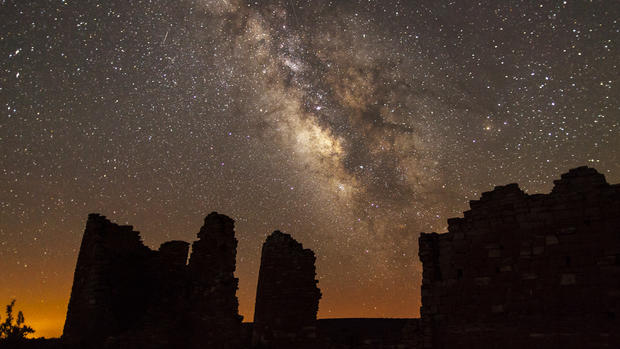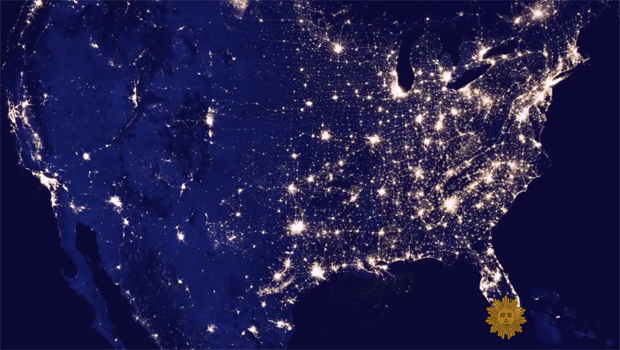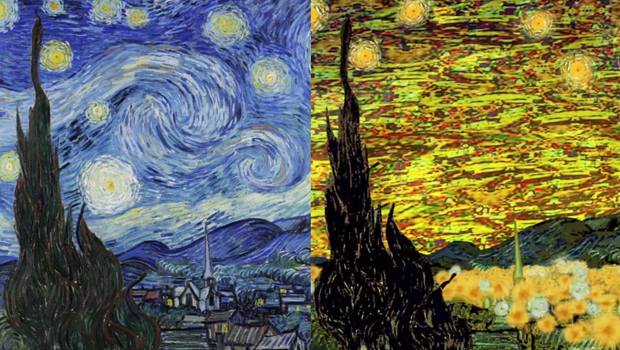Preserving the starry, starry night
Are city lights and suburban street lamps dimming our view of the starry, starry night? Not everywhere. At least not yet. Barry Petersen takes us stargazing. Originally broadcast August 10, 2014:
In west Texas, there's not much to see in a vast stretch of emptiness ... that is, until the sun calls it a day.
And then, up there, is a night sky bursting with stars . . . a jam-packed canopy of constellations.
On most weekends, Ron Dilulio sings about the night sky at a Dallas nightclub. And he doesn't just croon about the moon; it's also his real job, looking up at the moon and the stars, teaching astronomy, and spreading the word about every Earth-bound star-gazer's worst enemy: light pollution.
Dilulio brings his students from the University of North Texas near Dallas to this particular part of west Texas, where the lights are SO few, the stars are so many, captured by his time-lapse photography.
"I have yet to see a person come out in the night-time, look up at a sky that is dark, or look through a telescope, and not go 'WOW!'" Dilulio said. "They always do that."
In a world where people spend most of their time looking down upon screens, there is not much incentive to look up; city lights block out the night sky.
But on this NASA map, there is also an Earth-bound version of a black hole -- down in west Texas.
It is not by accident, but thanks to men like Bill Wren, a veteran astronomer at McDonald Observatory, the largest and one of the busiest optical telescopes in North America. It sits atop a west Texas mountain.
Wren's nicknames include the "Angel of Darkness." And what does that mean? "Well, just that I'm the light police," he laughed.
Saving the darkness of the night sky is his mission. Using grant money, he offers free light fixtures that aim light down and away from the night sky.
Wren and others also helped change building codes to make "down" lights mandatory in seven counties covering 28,000 square miles.
To convince the dubious, Wren offers an example: Van Gogh's "Starry Night," painted in 1889. When he imagines the painting with today's light polluted skies, the night sly looked more like this:
"We would be without 'Starry Night,'" said Petersen, "because Van Gogh would be without stars?"
"How many Van Goghs are alive today that won't have that inspiration?" said Wren.
There may not be many Van Goghs, among the hundreds who come from across America for overnight star parties at the observatory. But still, they are romantics and star-gazers all in one -- like Adam Atanes.
"The skies here are just beautiful," he said. "The darker they are, the more you can see."
And it turns out, darkness is something you can sell. Homes are being built specifically for people who want to live under the dark sky. To help preserve their heavenly view, the development bans streetlights and outdoor lights.
"We came here as astronomers, amateur astronomers, to enjoy the skies without interference from light pollution," said Bob Newman at nearby Davis Mountain, another no-outdoor-light development. He came here for a night sky that still entrances.
And how many of us are lucky enough to say this? "You can read by the light of Venus," said Newman. "You certainly can read by the light of the full moon. The Milky Way comes up and looks like clouds in the sky.
"You take a look at the moon like this and you say, look how beautiful that moon looks! How large it is!"
And, says Dilulio, the moon is just the beginning of exploration. He believes there is still plenty to learn about the universe from gazing at a truly dark night sky.
"There's a lot more things out there that we don't know about, and that's what's exciting," he said. "Maybe we can still discover. We can still be those explorers, and that's not over. And our children and our descendants will have that opportunity to discover -- that's what needs to happen."
"And if you can keep the light pollution away," said Petersen, "they could actually stand here and do some of that?"
"That's right -- that's what we hope to do here."
Here, one of the last places where modern man can look up and see what our ancient ancestors saw, trembling, delighting, or just basking in nature's nightlight.
For more info:
- Ron Dilulio, Department of Physics, University of North Texas, Denton, Texas
- Sky Theater at UNT
- Follow UNT's Sky Theater on Twitter (@SkyTheater) and Facebook
- Ron Dilulio at Silver Dollar Sounds
- University of Texas McDonald Observatory
- Follow McDonald Observatory on Twitter (@mcdonaldobs), Facebook and YouTube
- Follow International Dark Sky Assn. on Twitter (@IDADarkSky) and Facebook
- International Dark Sky Association


